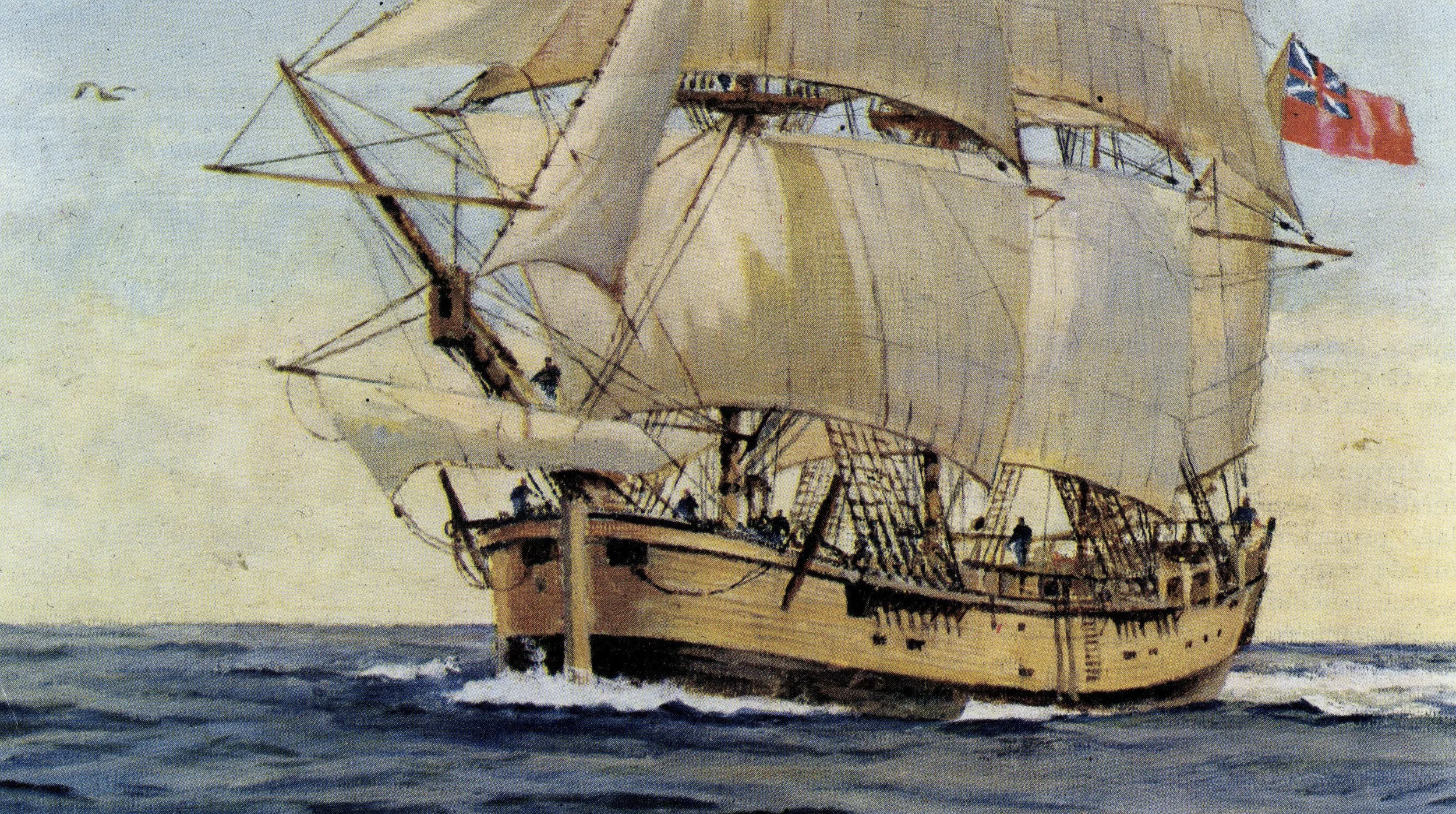Shipwreck found in US confirmed as Captain Cook's Endeavour after 22-year search.
By Cecilia Connell for the ABC
Maritime experts are convinced they have confirmed the final resting place of Captain James Cook's ship, Endeavour, after 22 years of searching.
The Australian National Maritime Museum (ANMM) announced a wreck in Newport Harbour, off Rhode Island in the United States, had been confirmed as the ship. The Endeavour, which was scuttled in the harbour as part of the American War of Independence in 1788, has a prominent place in Australian history. In 1770 it became the first European vessel to reach the east coast.
ANMM director and CEO, Kevin Sumption, said the confirmation was significant.
"I am satisfied that this is the final resting place of one of the most important and contentious vessels in Australia's maritime history."
Maritime archaeologists have been investigating several 18th century shipwrecks in a 2 square mile (5.2 square kilometres) area, known as RI 2394, since 1999.
"The last pieces of the puzzle had to be confirmed before I felt able to make this call. Based on archival and archaeological evidence, I'm convinced it's the Endeavour." Mr Sumption said.
Originally launched in 1764 as the Earl of Pembroke, four years later it was renamed Endeavour by Britain's Royal Navy.
Over the next three years, the ship voyaged to the South Pacific, firstly on an astronomical mission to record the transit of Venus in Tahiti, before charting Australia's east coast and the coast of New Zealand in 1770.
The vessel lay forgotten for more than two centuries, after it was sold to private owners and deliberately sunk in 1778 by British forces.
While only 15 per cent of the vessel remains, efforts are now focused on how to protect and preserve it.
Researchers say several key markers distinguished the Endeavour from four other ships sunk in Newport in August 1778:
historical evidence indicates the ship was sunk just north of Goat Island in Newport Harbour, along with four other British transports
the ship was the largest of the five scuttled transports in that area
archaeological evidence indicates RI 2394 is significantly larger than any other 18th century shipwreck site
the length of the surviving hull is almost exactly the same as that recorded for Endeavour
the structural details and shape of the remains closely match historic plans of Endeavour
diagnostic clues such as the construction of the keel along the bottom of the wreck, the joinery used in its bow at the front and the placement of the vessel's fore and main mast are identical to those shown on 18th century plans of Endeavour
timber samples strongly suggest a vessel built in Europe, not America.
The research team are finalising their report on the site, which will be peer-reviewed and published in the months ahead.
In making today's announcement, Mr Sumption acknowledged his American counterparts.
"We pay tribute to the work of Dr Kathy Abbass and her team at the Rhode Island Marine Archaeology Project for their ongoing commitment to the site and its history. It's an important historical moment, as this vessel's role in exploration, astronomy and science applies not just to Australia, but also Aotearoa New Zealand, the United Kingdom and the United States."
To mark the occasion, an interactive website has also been launched featuring immersive videos, animation, underwater footage and photogrammetry data sets.
For an update and a twist on this story read this Guardian Article

